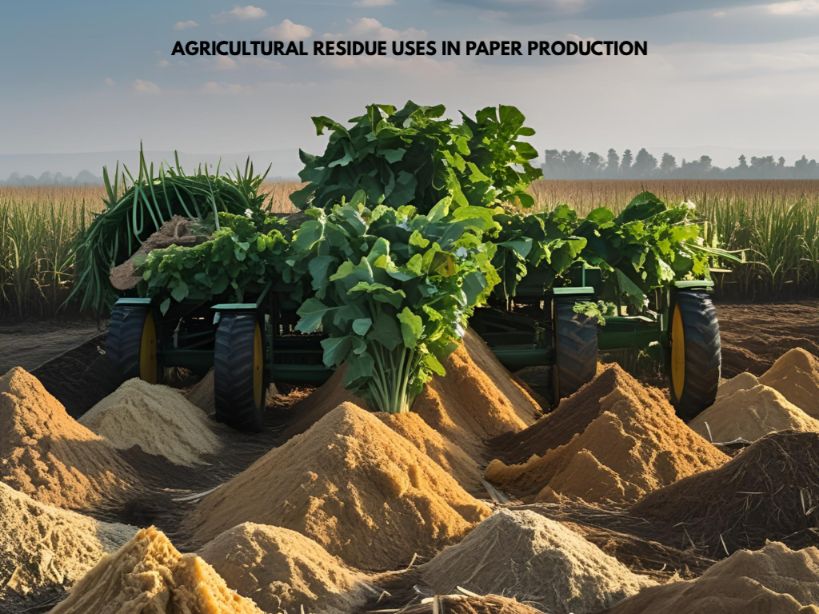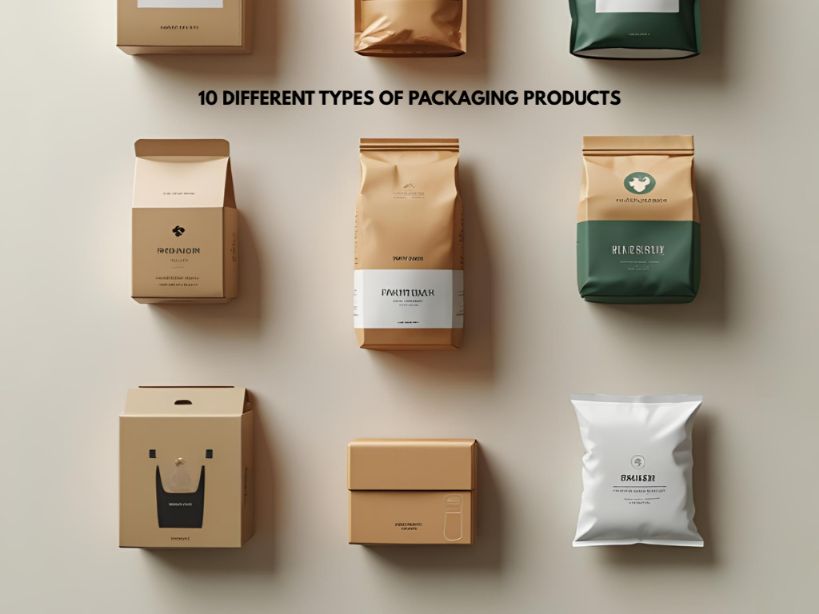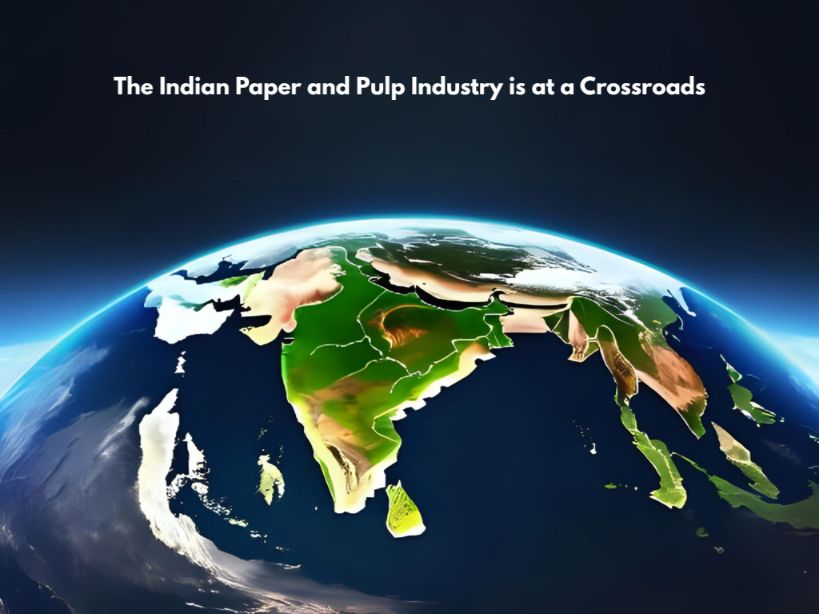Agricultural residue uses in paper production
Before the introduction of wood, which now dominates the raw material supply alongside wastepaper, other forms of agricultural leftovers or agricultural residue were utilised as raw material for paper. Straw and bagasse are the most common agricultural leftovers used in the paper industry, and for composite applications, bagasse and flax fibres, but a variety of other residues are also utilised. Any fibre plant may theoretically be tee pulped to give cellulosic fibres to paper producers for making paper, but technological and, more commonly, economic restrictions limit the number of varieties that can be used.
Any fibrous raw material, such as timber, straw, or bamboo, must first be transformed into pulp by dissolving the fibres, which is also true in the creation of fibreboard. As a result, pulp and paper making are frequently combined activities, particularly when agricultural residue are employed as raw materials. Fibreboard manufacturing is a fully integrated process.
The ease with which a fibrous raw material may be converted into pulp, as well as the qualities of the resulting pulp, influence a fibrous raw material’s technical appropriateness for the creation of various types of paper. As a result, the usage and acceptability of agricultural leftovers for the entire integrated operation of pulping and papermaking are discussed in the following.
A ROLL OF PAPERBOARD, which isn’t always made of wood.
This comparison of the orders of magnitude of agricultural residue availability and current utilisation for paper and panel product manufacturing demonstrates significant theoretical potential. However, it should be noted that the collecting amounts of bagasse and straw are much lower, owing to the economic limits imposed by the materials’ dispersed availability.
Other applications, such as energy generation, soil improvement, cow feed, bedding, and so on, diminish the availability significantly; yet, even after accounting for these other uses, the leftover amounts may potentially sustain huge paper and panel companies. The restricting technological and economic considerations deriving from the specialised nature of these businesses, as well as the agricultural residue accessible, help explain why residues have not been utilised to their clear theoretical potential in the paper and pulp industries.
SUDAN’S COTTON GIN – used cotton fibres for good quality paper
The agricultural residue is known for having widely distributed sources of supply, which leads to higher collection and transportation expenses. This is especially true when it comes to leftovers like the straw that become accessible after the main crop has been harvested. Even if the residual is available in a more condensed solution, such as bagasse or flax straw, following industrial processing, the amounts available from one location must frequently be augmented by supplies from other processing plants, which can result in much higher transportation costs. The low density of the leftovers is another issue that affects collecting and transportation expenses.
Common Agricultural Residue Used in Paper Production
Some of the most significant agricultural residue have unique characteristics.
Bagasse, straw, cotton linters, and flax tow are used as raw materials in the building material and paper and paperboard industries, and short explanations of their present application, special features, and technology are provided below.
Bagasse
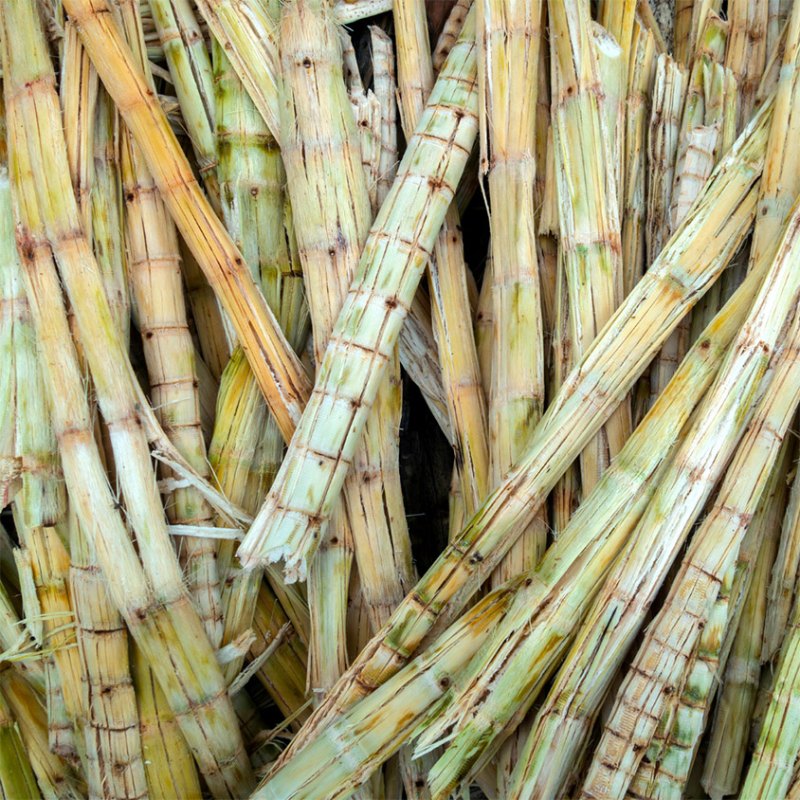
Straw
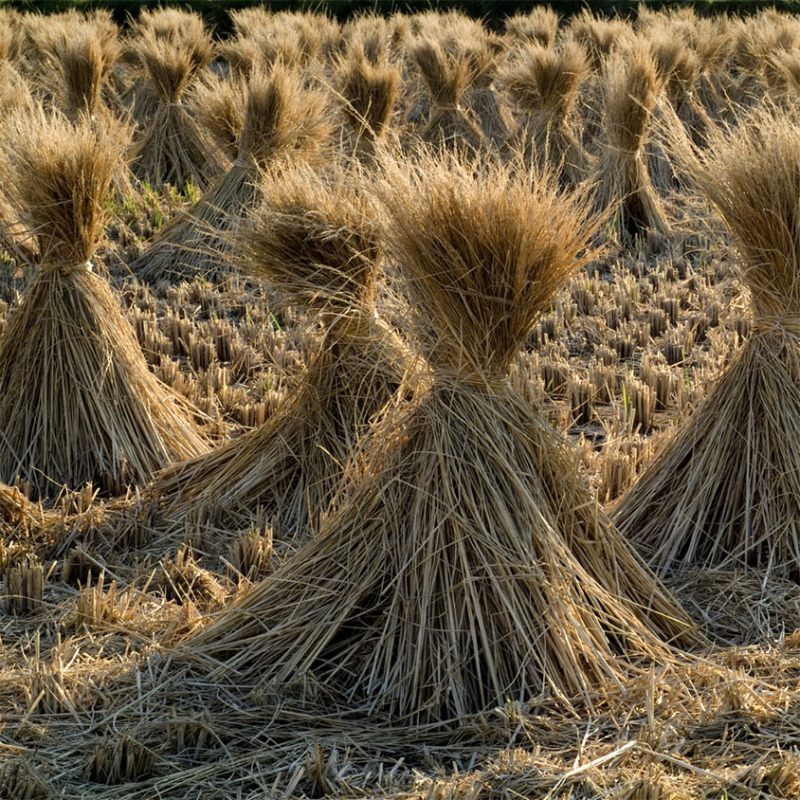
Bagasse
Bagasse is the fibrous residue left after the sugarcane is crushed in a sugar mill. Green bagasse has a moisture content of around 50%, a residual sugar content of 2-3%, and a fibre content of close to 50%. Pith accounts for about a third of the dry volume of bagasse fibre. Despite its chemical similarity to cellulose, pith lacks the fibrous structure necessary in raw materials for pulping and panel manufacture, and hence must be removed. Only the leftover depicted bagasse can be pulped or used to make panels.
However, because sugar mills use bagasse as a biofuel in their boilers, the amount of bagasse accessible as a raw material for paper and panel mills is severely limited. Learn the applications of biomass energy in pulp and paper industry here.
Straw
Straw, unlike bagasse, is not a homogenous raw material; it is made up of a variety of cereal straws, rice straw, and maize stalks, all of which have somewhat different pulping and papermaking qualities. The best cereal straws are rye and wheat straws, whereas maize stalks and barley straw are deemed less suited owing to a larger amount of leafy and other extraneous components.
Rice straw, possibly the most challenging of all straws to use, has a very high silica concentration, which makes chemical recovery more difficult, in addition to the exceedingly poor draining qualities common to all straws. Cereal straws and maize stalks have a fibre length of around 1.5 mm on average, with a high content of long fibres.
Straw has also been used to make a specific sort of panel by compression of the shredded straw into an extruded panel that is utilised in building construction.
One tonne of paper is expected to require around three tonnes of moisture-free straw.
Linters of cotton
Cotton linters are the short fibres left on the cotton seed after ginning has stripped the staple (long) fibres. The linters are separated from the seed using machines. While linters are too short to be utilised in textile production, they can be used for felting, batting, and other similar tasks. There are many grades available, including first-cut, second-cut, and mill-run. The longest and highest-quality fibres are those that are cut first. It is, nevertheless, a source of high-quality paper cotton fibres. Purified linters may also be found in the highest quality protecting and writing papers, as well as saturating and filter sheets.
Linters are refined for use in paper pulp or dissolving pulp using comparatively simple soda procedures.
Flax
Flax is widely farmed to produce linen and linen-seed oil. Flax strives are the leftovers after the long fibres have been removed. Flax pulp is predicted to be produced throughout the globe in quantities of fewer than 100 000 tonnes. Although the very expensive price of the pulp will limit the quantities at a small level, the use is projected to continue to grow. Flax seeds, on the other hand, are a major raw material in the production of particleboard, as previously noted.
To summarise, the use of agricultural wastes in the panel and paper sectors is limited mostly by economic concerns, whereas technological issues may be addressed in most cases. The multiple economic constraints stem from the industries’ and agricultural wastes’ unique characteristics and are notably connected to the economics of harvesting, transportation, storage, chemical usage, fibre yields, and product quality.
Also, learn more about wood free paper and its benefits.
